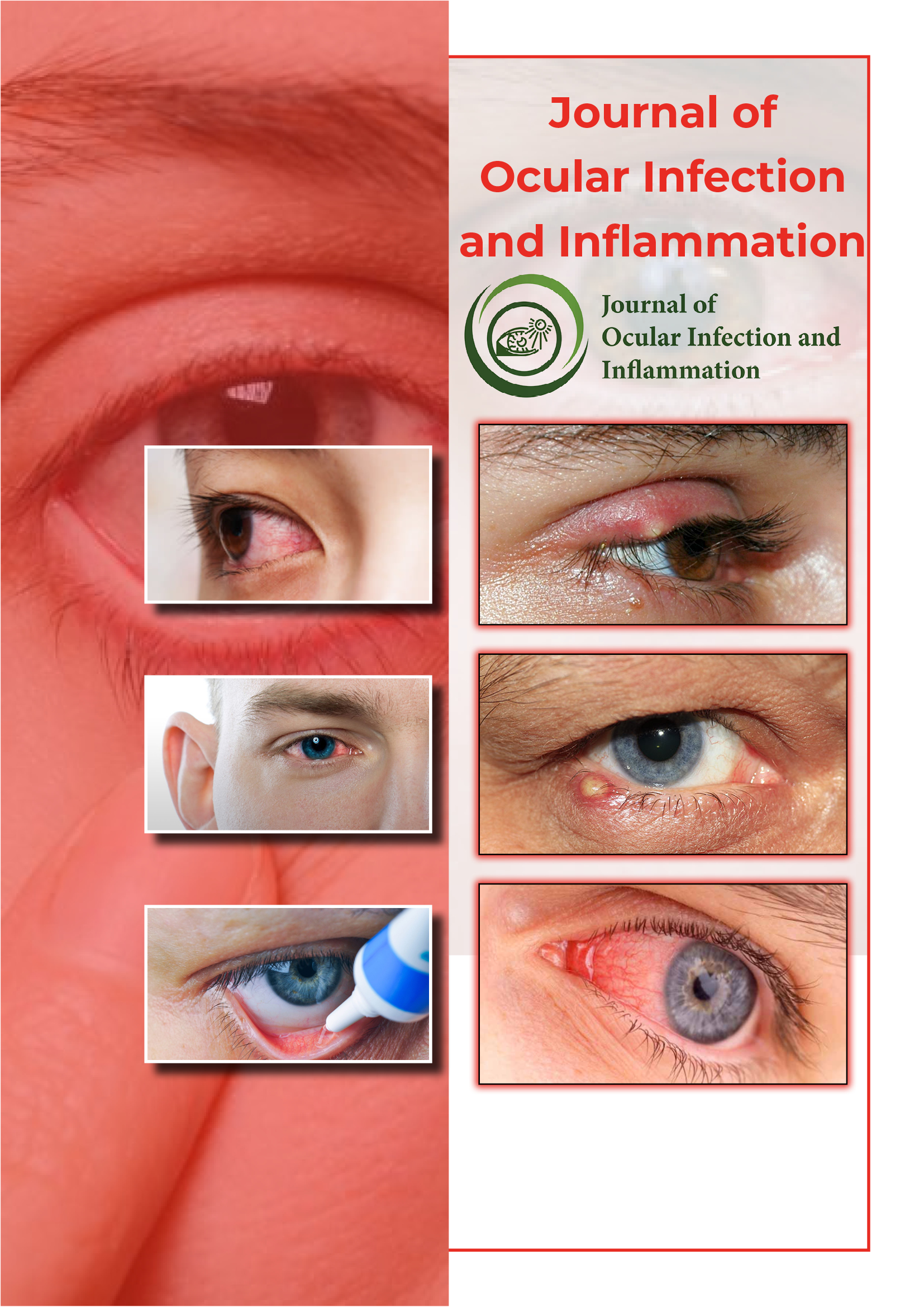Useful Links
Share This Page
Journal Flyer

Open Access Journals
- Agri and Aquaculture
- Biochemistry
- Bioinformatics & Systems Biology
- Business & Management
- Chemistry
- Clinical Sciences
- Engineering
- Food & Nutrition
- General Science
- Genetics & Molecular Biology
- Immunology & Microbiology
- Medical Sciences
- Neuroscience & Psychology
- Nursing & Health Care
- Pharmaceutical Sciences
Opinion Article - (2025) Volume 6, Issue 1
Ocular Tuberculosis: Diagnostic Pitfalls and Therapeutic Outcomes in a Multicenter Retrospective Review
Ahmed Qureshi*Received: 26-Feb-2025, Manuscript No. JOII-25-29242; Editor assigned: 28-Feb-2025, Pre QC No. JOII-25-29242(PQ); Reviewed: 14-Mar-2025, QC No. JOII-25-29242; Revised: 21-Mar-2025, Manuscript No. JOII-25-29242(R); Published: 28-Mar-2025, DOI: 10.35248/JOII.25.06.132
Description
Ocular Tuberculosis (OTB), though a relatively rare manifestation of systemic Mycobacterium tuberculosis infection, remains an important diagnostic consideration in endemic regions. The disease is notorious for its protean manifestations, ranging from anterior uveitis and retinal vasculitis to choroiditis and optic neuropathy, often mimicking other inflammatory or infectious conditions. Despite its relevance, clinical suspicion of OTB is often delayed due to the absence of concurrent pulmonary involvement and the nonspecific nature of ocular signs. This study retrospectively reviews a series of patients with confirmed or presumed OTB from multiple centers across Pakistan, highlighting diagnostic challenges and treatment outcomes.
A total of 114 patients were evaluated across four tertiary eye hospitals over a period of four years. Inclusion criteria were clinical findings consistent with ocular TB supported by a positive Tuberculin Skin Test (TST) or Interferon-Gamma Release Assay (IGRA), radiologic evidence of past or active TB and a favorable response to Antitubercular Therapy (ATT). Only 27% of patients had documented pulmonary TB, reinforcing the idea that ocular involvement can often occur in isolation.
The most common ocular presentation was posterior uveitis (39%), followed by anterior uveitis (26%), intermediate uveitis (17%) and panuveitis (11%). Retinal vasculitis was noted in 31 patients and was associated with high rates of visual morbidity. Other findings included choroidal granulomas, serpiginous-like choroiditis and papillitis. Bilateral involvement occurred in 42% of cases.
Diagnosis was predominantly clinical, supported by systemic investigations rather than ocular biopsy, which was not performed due to its invasive nature and low diagnostic yield. Chest X-rays revealed signs of old granulomatous disease in 44% of patients and HRCT scans provided additional findings in selected patients with negative chest radiographs. IGRA was positive in 81% of patients, while the TST was positive in 65%. The role of polymerase chain reaction from aqueous or vitreous samples was limited due to low positivity and high cost.
All patients were started on a standard four-drug ATT regimen, typically including isoniazid, rifampicin, pyrazinamide and ethambutol, followed by a two-drug continuation phase. Systemic corticosteroids were co-administered in cases with significant inflammation, especially in those with posterior segment involvement. The average duration of therapy was 9 months, though some patients with recurrent inflammation were treated for up to 12 months.
Improvement in inflammation and visual acuity was noted in 74% of patients. Complete resolution without recurrence was achieved in 58%, while 16% experienced at least one relapse, mostly due to early discontinuation of therapy or corticosteroid monotherapy before initiating ATT. Visual improvement was modest in patients with chronic uveitis or recurrent retinal vasculitis due to structural damage, including macular edema and optic atrophy.
One of the key observations was the inappropriate use of corticosteroids prior to establishing the diagnosis of TB, which led to worsening of ocular inflammation and delayed treatment. Several patients had been misdiagnosed with idiopathic uveitis or sarcoidosis before being correctly managed for TB. This underscores the critical need for early recognition and comprehensive systemic evaluation in any patient presenting with granulomatous or unexplained uveitis in endemic regions.
In light of these findings, a high index of suspicion, coupled with thorough systemic evaluation, is essential in diagnosing ocular tuberculosis. While microbiological confirmation remains elusive in most cases, therapeutic response to ATT remains a key criterion for diagnosis. It is important to avoid initiating corticosteroids without ruling out infectious etiologies in patients with uveitis, especially in countries with high TB prevalence.
Ocular tuberculosis continues to be underdiagnosed and mismanaged due to its clinical variability and diagnostic complexity. Multidisciplinary collaboration between ophthalmologists, pulmonologists and infectious disease specialists is critical in improving detection, treatment compliance and visual outcomes. Early initiation of appropriate therapy not only improves patient prognosis but also prevents unnecessary complications related to misdiagnosis and delayed treatment.
Citation: Qureshi A (2025) Ocular Tuberculosis: Diagnostic Pitfalls and Therapeutic Outcomes in a Multicenter Retrospective Review. J Ocul Infec Inflamm.06:132.
Copyright: © 2025 Qureshi A. This is an open-access article distributed under the terms of the Creative Commons Attribution License, which permits unrestricted use, distribution and reproduction in any medium, provided the original author and source are credited

